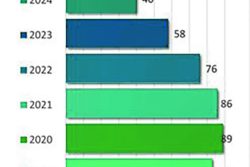He was gifted with eagle-like eyes’ and he had the speed of a hare and the concentration of a man on fire.
Those qualities abounded in him, a testimony that can be retold by opposing bowlers from England, India, Pakistan, Australia and New Zealand.
Of course we speak of Kanhai when that dapper figure dons his whites and marches to the middle with bat in hand at the start of an innings in test matches, in first class games or what have you.
Hitherto unknown excepting for those who were fortunate to dwell in the areas of Port Mourant around Berbice, this new found West Indian cricketer blazed the trail of West Indies cricket, bringing joy to many who, among other things, defied the elements of the weather, inclement or otherwise, to see him pepper the most fearsome of bowlers in his quest of blasting for runs.
The players of Essequibo and, of course Demerara, had their early taste of Kanhai, along with Butcher and Solomon.
But the records tell the sad story of Demerara when their bowlers thought it best to ask the Demerara Skipper Clyde Walcott to pass them by and to try another bowler.
The record says only Lance Gibbs had the courage to continue to bowl to Kanhai, and to face the onslaught of the little man from the Corentyne.
Kanhai hit the ball to every corner of the field and was a pest as it were both to bowlers and fielders alike as his piercing and punching shots scorched the ground on their way to the boundary.

When finally he signalled to his captain that he had had enough, the Demerara bowlers were indeed relieved. Indeed, it was time to declare his innings closed and to give another batsman a chance to face the music. Undeniably, Kanhai had blasted his way into the Guyana side under his coach, Clyde Walcott. The line up was Jamaica. Generations have grown up to learn that Roy Gilchrist and Tom Dewney were among the line up of the Jamaicans quickie.
For Kanhai, they were fellow mortals. His score of 129 speaks for itself. The regular march of Jamaican fielders to the boundary board, the unannounced pleas to their captain Alan Rae, and the looks of disgust and frustration on the countenances of their bowlers tell the sad story that enough was enough for the poor Jamaicans. After three days of merciless leather hunting the Guyanese skipper called it quits and the Jamaican were asked to take strike.
The next game against Barbados was not much different. Guyana had to contend with the Atkinson brothers, Eric and Dennis. They also had to contend with a young and effervescent all rounder, Garfield Sobers; have we forgotten the name of Wesley Hall? Of course there was John Goddard himself and the bowling line up was raring to go against Pairadeau, Glendon Gibbs, and Kanhai and his new found crew, led by Barbados-born Clyde Walcott.
The Barbados line up had yet come to grips with Kanhai whoe feat included a six on the last ball before tea—-talk about throwing caution to the winds. Kanhai could hardly had forgotten the warning — if you could call it that —- or the plea by Skipper Clyde Walcott to Kanhai, that he should make an effort to concentrate more on his batting and that he should seek bigger scores. Do bear in mind that he had made 129 in the just concluded match against Jamaica. For Kanhai, 195 was not enough which he made against the Bajans. One can imagine the joy among the Barbadian fielders when he was ruled run out for his 195.
Kanhai from then on continued to announce his presence to the world and the Test century that evaded him was around the corner. Kanhai himself knew that it was only a moment of time. In his first Test tournament which he made in England he was said to record his first 50. It was indeed a pleasure to listen to him and the great Clyde Walcott bat together as they fought the bowling of Sir Fred Trueman and Brian Statham, Tony Lock and Jim Laker, It was indeed a pleasure hearing how Kanhai practiced the shots off the back foot, patterned after the great Clyde Walcott.
Against the Pakistan touring team, Kanhai recorded 96 and in his enthusiasm to become the first Guyanese to make a Test Century at Bourda, he was caught on the boundary, four short of this magical figure. It is opportune to mention that Kanhai recorded the first Test century at Bourda by a Guyanese cricketer subsequently.
Fans will remember that he again fell in the nineties this time in Pakistan by the run out route as he strived to achieve his first test 100. However, he was the first Guyanese to make a double century in test cricket, and also the first Guyanese to captain the West Indies for extended tests. Rohan Kanhai had also played in the Lancashire League, a footstep that was to be followed by several West Indian players.







